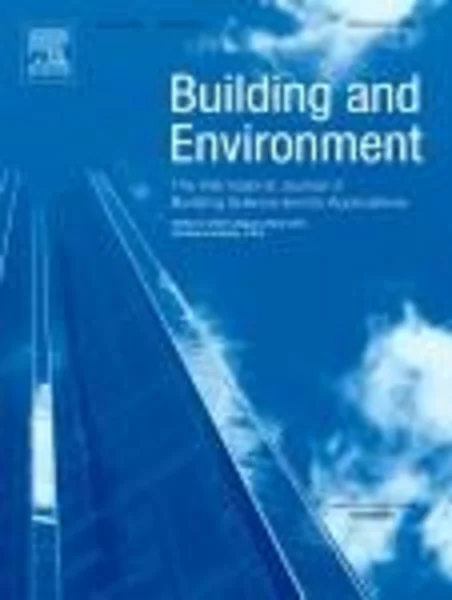-
climate change adaptation pathways for australian residential buildings
جزئیات بیشتر مقاله- تاریخ ارائه: 1390/01/01
- تاریخ انتشار در تی پی بین: 1390/01/01
- تعداد بازدید: 565
- تعداد پرسش و پاسخ ها: 0
- شماره تماس دبیرخانه رویداد: -
climate change can significantly impact on the total energy consumption and greenhouse gas (ghg) emissions of residential buildings. therefore, climate adaptation should be properly considered in both building design and operation stages to reduce the impact. this paper identified the potential adaptation pathways for existing and new residential buildings, by enhancing their adaptive capacity to accommodate the impact and maintain total energy consumption and ghg emissions no more than the current level in the period of their service life. the feasibility of adaptations was demonstrated by building energy simulations using both representative existing and new housing in eight climate zones varying from cold, temperate to hot humid in australia. it was found that, in heating dominated climates, a proper level of adaptive capacity of residential buildings could be achieved simply by improving the energy efficiency of building envelop. however, in cooling dominated regions, it could only be achieved by introducing additional measures, such as the use of high energy efficient (ee) appliances and the adoption of renewable energy. the initial costs to implement the adaptations were assessed, suggesting that it is more cost-effective to accommodate future climate change impacts for existing and new houses by improving building envelop energy efficiency in cooling dominated regions, but installing on-site solar pvs instead in heating and cooling balanced regions.
مقالات جدیدترین رویدادها
-
استفاده از تحلیل اهمیت-عملکرد در ارائه الگوی مدیریت خلاقیت سازمانی و ارائه راهکار جهت بهبود
-
بررسی تاثیر ارزش وجوه نقد مازاد بر ساختار سرمایه شرکت های پذیرفته شده در بورس اوراق بهادار تهران
-
بررسی تأثیر سطح افشای ریسک بر قرارداد بدهی شرکت های پذیرفته شده در بورس اوراق بهادار تهران
-
بررسی تأثیر رتبه بندی اعتباری مبتنی بر مدل امتیاز بازار نوظهور بر نقد شوندگی سهام با تأکید بر خصوصی سازی شرکت ها
-
تأثیر آمیخته بازاریابی پوشاک ایرانی بر تصویر ذهنی مشتری پوشاک ایرانی (هاکوپیان)
-
بازاریابی پسته (بررسی موردی استان فارس)
-
تاثیر دانه بندی روی پارامترهای دینامیکی خاک تحت بارهای سیکلی
-
بررسی دیدگاه و نگرش اطرافیان بیمار مبتلا به صرع بستری در بیمارستان شهید بهشتی کاشان طی سال های 79-1378
-
تاثیر مسیر یادگیری بر خودتنظیمی دانش آموزان متوسطه اول شهر ایرانشهر
-
the influence of a special fillet between the endwall and airfoil at the leading edge on the performance of the turbine nozzle diaphragm
مقالات جدیدترین ژورنال ها
-
مدیریت و بررسی افسردگی دانش آموزان دختر مقطع متوسطه دوم در دروان کرونا در شهرستان دزفول
-
مدیریت و بررسی خرد سیاسی در اندیشه ی فردوسی در ادب ایران
-
واکاوی و مدیریت توصیفی قلمدان(جاکلیدی)ضریح در موزه آستان قدس رضوی
-
بررسی تاثیر خلاقیت، دانش و انگیزه کارکنان بر پیشنهادات نوآورانه کارکنان ( مورد مطالعه: هتل های 3 و 4 ستاره استان کرمان)
-
بررسی تاثیر کیفیت سیستم های اطلاعاتی بر تصمیم گیری موفق در شرکتهای تولیدی استان اصفهان (مورد مطالعه: مدیران شرکتهای تولیدی استان اصفهان)
-
اثر یکپارچه کردن مدیریت ریسک بر راهبردها و حاکمیت شرکتی (مطالعه موردی در شرکت های بیمه پاسارگاد)
-
بررسی رابطه بین محافظه کاری حسابداری و عملکرد شرکت در طول همه گیری covid-19 در شرکت های پذیرفته شده در بورس اوراق بهادار تهران
-
fuzzy and classical mcdm techniques to rank the slope stabilization methods in a rock-fill reservoir dam
-
a lesson from vernacular architecture in nigeria
-
laboratory investigation on interaction of the pile foundation strengthening system with the rebuilt solid pile-slab foundation




سوال خود را در مورد این مقاله مطرح نمایید :